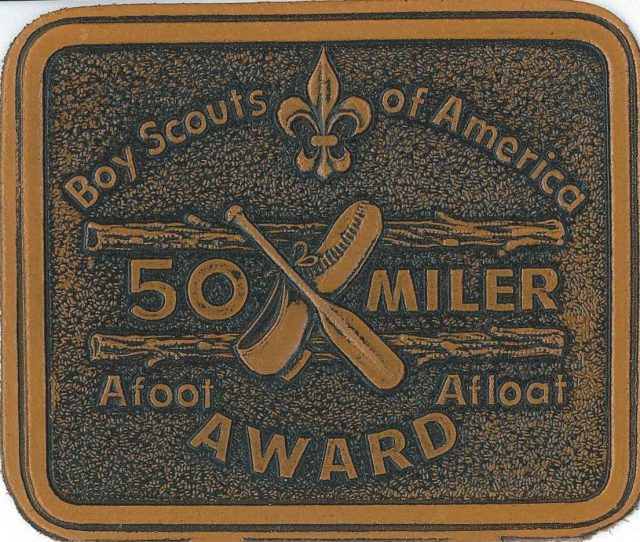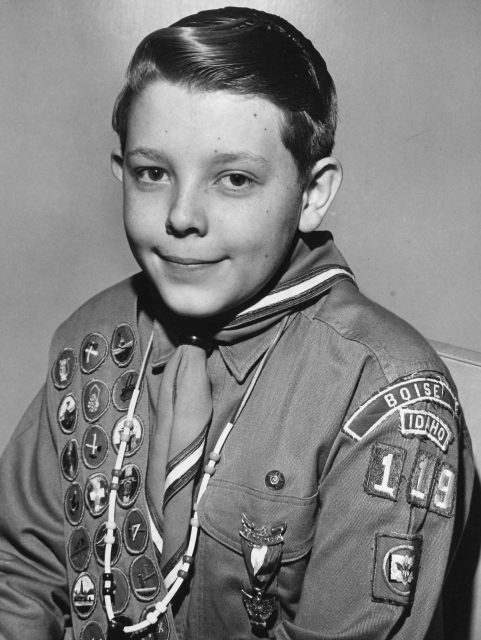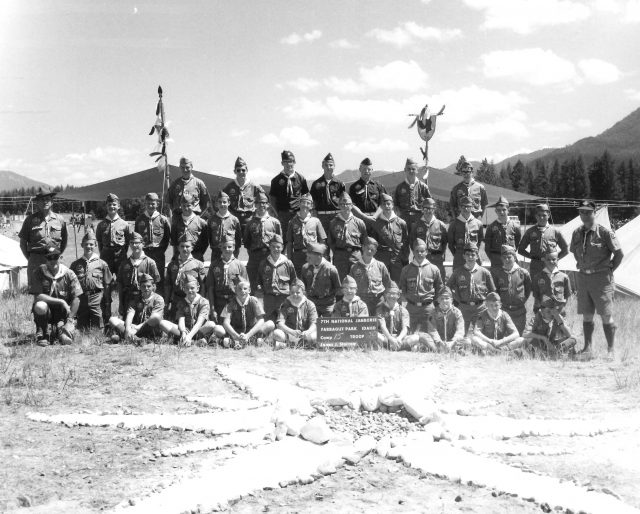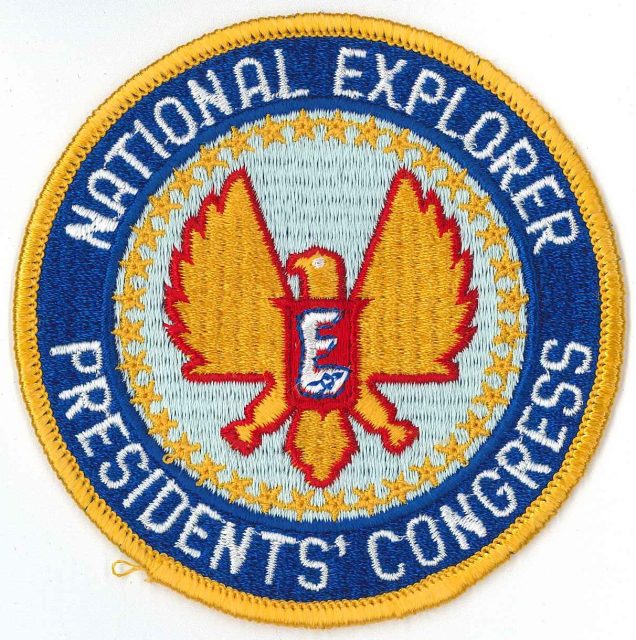Scouts
Cub Scouts
I was active in the Cub Scouts and achieved my Wolf, Bear, Lion, and Webelos awards and many gold and silver Arrow Points. After graduating to the Guide Patrol, I went to a day camp at Tracy Wigwam. We went to camp each day for a week and came home each night. I had a lot of fun. I achieved the Webelos rank on August 15, 1966.
Boy Scouts in Salt Lake City
I entered the Boy Scouts in July of 1967 and was a member of Granger Troop 797 in the Great Salt Lake Council. Our scoutmaster was Wallace Wilford Wilding. I think Wally worked for Winder Dairy. Bob Calvin was an assistant scoutmaster and later became the scoutmaster. One of my friends in the troop and at school was Norman Nelson. His father, Wayne Nelson, was the previous scoutmaster before Wally. (He would have been a scoutmaster for my brother Jeff.) Norman went to Valley Junior High. Another friend was Rusty Chapman. Some of the girls in our ward were Debbie Grimm, Janice Thompson, Robin Wilding, Melinda Lott, and Mariana Fox.
Top 50 Troops
Our scout troop was very active. We used the whole downstairs at the church, which had several large rooms. We had a special welcome ceremony whenever a new scout entered the troop. Our leaders emphasized earning merit badges and awards. And everyone enjoyed it. At scout camp, it was considered average in our troop to earn four merit badges. Many from our troop would get five or six.
We had a stake court of honor every month. Randy Prince’s father oversaw the stake court of honor. Each troop earned points for awards, merit badges, attendance at the court of honor, and the number in complete uniform. Each month, the troop with the most points could keep a plaque to hang at the top of their troop flag until the next month. There was a lot of structure and competition.
Each year, the Church would recognize the best 50 troops in the Church with a Top 50 Troop award. The award was based on factors such as the number of merit badges and awards earned. Our troop applied and was recognized as the 49th troop in the Church. We received a certificate and award for it.
East Fork of the Bear Scout Camp
I went to my first summer camp at East Fork of the Bear in July 1967. My brother Jeff also went on this camp, along with his friends Bill Cunningham, Randy Prince, and Craig Hedin. (Jeff and these three friends all received Eagle Scout awards on the same night.)
East Fork of the Bear had a legend of Hyrum, a contrived tale to scare the younger scouts. After years of retelling and elaborating the legend, the older staff members became quite good storytellers. I remember my brother telling me that the first year he went there, the various troops set up tents across the hillside. But after the campfire that first night when they told the story about Hyrum, once they went back to their campsites, each troop huddled around the scoutmasters’ tents.
Hyrum was a legendary man who worked in the mines up in the hills near the camp. And he was not liked by his foreman. One day, they were blasting, but the charge did not go off as planned. So, the foreman sent Hyrum into the mine to find out why the blast did not go off. While Hyrum was down in the mine, the blast went off. And after the dust cleared out, they went into the mine, but they could not find Hyrum. All they found was a spot of blood on a rock. The legend was that Hyrum was still seen around, but whether he was living, or dead was left up to the imagination of the scouts. The storytellers reported several instances where Hiram had been seen. And Hyrum came back to the area by the scout camp every seven years. And every year the story was told, it happened to be the seventh year.
One of the stories was about two guys driving late at night and they saw a hunched-over man walking along the side of the road. They pull over and asked if he wanted a ride. But he just kept walking as though he did not hear them. They pulled up again and asked him if he wanted a ride, but no reaction. The third time, as they pulled up next to him, he turned around and showed his horribly mutilated face. He grabbed the door handle, and they took off quickly. When they got back home, they saw that the door handle had been ripped off the car.
Another story was about a family who had a cabin near East Fork of the Bear. The mother and her two sons were home alone. When the father came home from work, he could not find his wife or sons anywhere. He went out back to their meat cooler where they hung sides of beef on meat hooks. There he found his family hung on the meat hooks. They told gory, scary stories like that. The best staff member was the one who could come up with the most gruesome stories to scare the young scouts. But we lived through it.
Smith Morehouse
In October 1967, we had an overnight campout at Smith Morehouse. The scoutmaster sent us out to clean up the picnic areas in the campground and I soon found myself separated from the other scouts. I wandered along a trail, getting more lost as I went. I could not have gone very far, but far enough to get scared. I ran through a small stream and up a hill in hopes of being able to see the campground below me, but I could not see anything for the trees. Although I was scared, I remembered that I could pray for help to find my way back. After praying, and I ran back down and crossed the stream. I went through some bushes and found myself on a dirt road. I remembered that our scoutmaster had mentioned that the road in the campground was in a circle. I knew I could follow the road in either direction and end up at camp. I had gone just a short way and met my scoutmaster coming from the opposite direction, dragging a small, dead tree behind him. He was whistling, and I remember how happy he seemed. I wondered how he could be so happy when I was so scared being lost. He gave me the tree and told me to take it back to camp. I was relieved to get back and was happy to see everyone. I did not tell anyone that I had been lost.
Order of the Arrow
In 1968, my troop nominated me for the Order of the Arrow. The “ordeal” was at Camp Bear Lake, June 21-22, where we were initiated into the brotherhood of the Order of the Arrow. We were not supposed to speak a word from the minute the camp started until the end. We each whittled an arrow out of wood and tied it around our neck with a cord. Any time a member of the Order of the Arrow heard us say a word, they would cut a notch on our arrow. And if we got three notches, we were disqualified from the Order of the Arrow. I believe I got one notch.
We performed service all day and they put us through various ordeals to see if we were worthy to be a member of the Order of the Arrow. At night, they marched us up the hill and every 20 feet or so would tell a scout to bed down right there and be back in camp at six o’clock in the morning. We did not have an alarm clock, but we were expected to be there at six o’clock.
After I became a member of the Order of the Arrow, I think I went to about two meetings and then we moved, so that was the extent of my involvement with the Order of the Arrow.
Scout Awards
I received my Second Class in the May 1967 court of honor, my First Class in the July 1967 court of honor, my Star in October 1967, and my Life in February 1968. I received my Eagle award on March 29, 1969, after we moved to Boise.
50-Mile Hike
One of the major things that I remember in the scout troop in Salt Lake was a 50-mile hike July 8–12, 1968, before we moved to Boise. It was a good experience for a 13-year-old boy. I believe we had three leaders ̶ Wally, Bob, and Blaine Grant, who lived right across the street from us in Salt Lake. We averaged about 10 miles a day on that hike. Before the last day of the hike, the scoutmasters figured that we had hiked almost the 50 miles, so they made a last-minute adjustment to the route. They found a path on the map that went over the mountain instead of around it. The plan was to end at Smith Morehouse, a camp where all our parents would meet us about 3:00 p.m. for dinner and a campfire program.
The scoutmasters charted the course and gave the map to Garth Ripley, a counselor in the bishopric. His job was to lead us on the path while the scoutmasters drove ahead to Smith Morehouse to prepare dinner and the program. Apparently, the path on the map had not been used for years, because it completely disappeared after about an hour’s hike, and we got completely lost.
We wandered in the hills for hours. For lunch, we had warm bologna and cheese sandwiches and several of the scouts began to feel sick to their stomachs. Some of the younger scouts got scared and started to cry. Some of us older scouts (those of us who were 13 years old and older) who tried to comfort them were not too much more confident ourselves.
When it became evident that we were lost, we stopped and prayed to ask that we might find our way. We then noticed the beautiful scenic views from the top of the mountains. We could see miles of green hills. We saw what looked to be a farmhouse with a barn with an aluminum roof that reflected the sunlight. We decided to walk toward the farm where we could at least have shelter for the night even if no one was there. If someone was there, we could get help to get to the camp where we were supposed to be.
Using our scout training, when we found a little trickle of water (just a few inches wide), we knew to follow it down the mountain. It flowed into a small stream, which later turned into a larger stream a few feet wide. It finally became a fast-moving river six feet wide. The river was hard to follow because there was no trail and a lot of trees.
We finally came to a little trail, which turned into a dirt road and finally a highway. We started to hitchhike and one of the first few vehicles that came by was a pickup truck with a man and his son, who happened to be a friend of one of the scouts in our troop. They had a cabin in the area. We hopped in the back of his pickup, and he took us to the ranger station in Kamas. When we finally realized we were getting back to civilization, we were very glad. Since noon that day, we’d eaten the half-spoiled bologna and cheese sandwiches and all we had left was about three oranges and a few suckers. We had rationed the food when we were lost, but now that we had found civilization, we quickly devoured the rest of the food.
It turns out that we had gone at a right angle to where we were supposed to go. The ranger in Kamas drove us in his station wagon over to Smith Morehouse and we got there about 12:30 a.m. to meet very worried parents. We finally got home about 2:00 a.m. It was an experience I’ll never forget. Although it was not his fault that we got lost, Brother Ripley (our leader that day) earned the nickname “Wrong-way Ripley.”
Shortly after the 50-mile hike, we moved to Boise. I hated to leave my friends ̶ Grant Hedin (who lived across the street from our house), my cousin Paul Seely, David Blackwell, and David Durrant. I hated to leave, because for the first time in my life, I was beginning to form good friendships and they meant a lot to me.
Boy Scouts in Boise
In July 1968, we moved to Boise, and I joined Troop 119. On August 4–10, I went with the troop to Camp Billy Rice. The scoutmaster was John Neal. He had been a scout leader for many years and had received the Silver Buffalo award. I already had most of my Eagle earned and I received it on March 29, 1969. At that court of honor, Brother John Warnick, a scout executive and member of our ward, presented me the award. I gave my mother an eagle scarf. It was her second; my brother had also given her one. I later earned two palms—just enough to beat my brother Jeff.
See my eagle certificate and invitation to the eagle banquet. See photos at the court of honor (with mom, another with mom, with parents, and with John Neal and John Warnick.) See congratulatory letters from the BSA, from my previous scoutmaster, and from Senator Frank Church. See newspaper article and another in the Box Elder News Journal, April 10, 1969.
See picture of my Eagle project, to make an advancement board for our troop.
Scout Jamboree 1969
July 13–23, 1969, I went to the National Boy Scout Jamboree at Farragut State Park, Idaho. See history of our troop at the jamboree. Our troop, number 30, held several organizational meetings in the basement of the Presbyterian Church on Tenth and State streets in Boise, beginning February 1 and every two weeks after that. Many other troops went to the Jamboree just to have fun, but our scoutmaster, Wes Sherrill, encouraged us to be a winning troop. We put effort into our campsite, including an impressive gateway entrance. Afterward, our scoutmaster told us that our troop had been rated the number one troop at the Jamboree. If it was true, it was quite an honor.
Friends who also attended the Jamboree included Ernie Webb, Bob Peck, and Scott Smith.
While at the Jamboree, Apollo 11 landed on the moon on July 20. They tried to show a tape replay of it the next day at the Jamboree, but they were not able to get a projector. (Technology was not that advanced back then.)
See article 1, article 2, image 1, and image 2.
Explorer Presidents Congress, Washington, DC
In the summer of 1971, Dad, I, and about 23 other explorers from our stake went to the Explorer Presidents Congress in Washington, D.C. It was a meeting of presidents of Explorer posts in the country. We met on the White House lawn with President Richard Nixon, who gave a special address as he stood in our midst. We then had a special tour of one of the wings of the White House. We saw the Lincoln Memorial, the Washington Monument, went through parts of the Smithsonian Institute, and the Capitol Building. We stayed at the Sheraton Park Hotel and there had caucuses and meetings about Exploring.
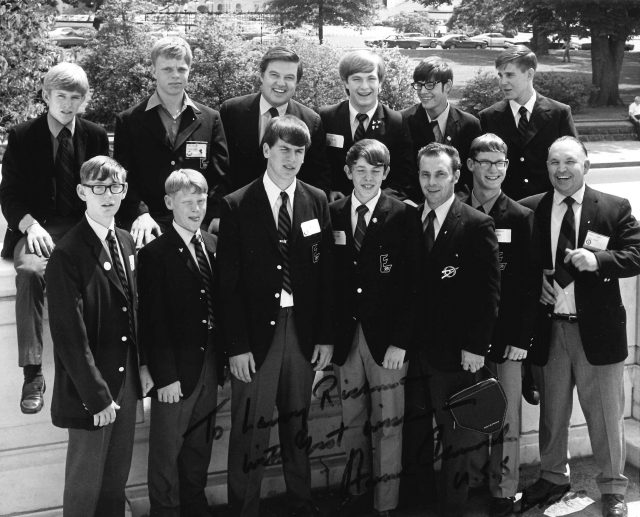
Photo of the explorers from our stake who attended the National Explorer Presidents’ Congress in Washington, DC. With Senator Frank Church of Idaho. See letter from Frank Church.
My cousin Mike Nelson lived in Maryland at the time, and one day he took Dad and me to Arlington Cemetery, where we saw the graves of Robert and John F. Kennedy. We also saw the Tomb of the Unknown Soldier and observed the changing of the guard.
We flew from Washington, D.C., to Salt Lake City, where we were scheduled to go to the Church Administration Building and meet the President of the Church, Joseph Fielding Smith. However, at the last minute, he was called out of town, so we met with Harold B. Lee, his first counselor. When we walked into his office, he had a newspaper on his desk, and I remember his concern over an airplane crash that had happened that day. He was concerned about the people involved, knowing that they were sons and daughters of God. His concern impressed me.
See newsletters, photo of the Sheraton Park Hotel where the congress was held, and passes. See my journal and other information.
Salmon River Run
July 31 to August 5, 1972, while I was the Explorer president, we rafted the middle fork of the Salmon River. Joe and Scott Featherstone were our guides. Their troop had taken many trips down the Salmon River, and they were experienced enough to be our guides. In the 5.5 days, we went over 90 miles. There were 15 boys (including the Featherstones) and one leader, Blaine Huff. See article in the June 1974 New Era.
Eagle Scout Trip
December 28–29, 1972, the Boise North Stake sponsored a trip to Salt Lake for all the Eagle Scouts. We toured Temple Square and met with the Presiding Bishopric.
Explorer Deep Sea Fishing
July 31 to August 4, 1973, the Explorers made a trip to Westport, Washington, to go deep sea fishing. (See additional photo 1, photo 2, and photo 3.)
Duty to God
While in scouting, I also earned my Duty to God award. See certificate, letter, and article in the Church News.


